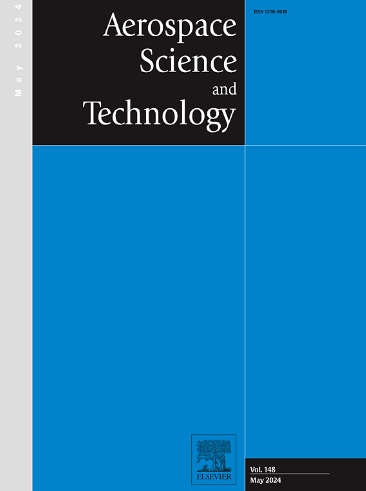Numerical study on dense-phase powder conveying in the feeding system of powder fueled ramjets
IF 5
1区 工程技术
Q1 ENGINEERING, AEROSPACE
引用次数: 0
Abstract
A better understanding of gas-solid flow in the pneumatic conveying of dense powders is an essential prerequisite for effective design and operation of conveying systems in powder fueled ramjets. This paper presents a resistance modified model applicable to the dense-phase powder conveying in gas-driven piston powder feeding system based on Two-Fluid Model (TFM), and the dynamic grid techniques related to the output powder mass flow rate has been applied on gas-driven piston boundary. The validity of the modified model is confirmed by comparing the predicted powder mass flow rate with data obtained from the experiment. The resistance modified model, which incorporates a comprehensive consideration of gas momentum loss by accounting for local solid fraction, interphase slip velocity, and powder diameter, is proved to significantly improve the accuracy of predicting dense powder conveyance. The features of gas-solid flow evolution in gas-driven piston powder feeding systems are numerical explored. The formation of the fluidizing gas cavity and its radial diffusion characters are studied and the influences of the total pressure of fluidizing gas on mass flow rate of powders are obtained. And choked occurs in gas-powder two-phase conveying to realize a stable propellant feeding under specific pressure ratio conditions. Moreover, pressure ratio determines pressure distribution in nozzle pipe revealing the transition of the flow pattern from core flow to annular flow corresponds directly to the pressure ratio.
求助全文
约1分钟内获得全文
求助全文
来源期刊

Aerospace Science and Technology
工程技术-工程:宇航
CiteScore
10.30
自引率
28.60%
发文量
654
审稿时长
54 days
期刊介绍:
Aerospace Science and Technology publishes articles of outstanding scientific quality. Each article is reviewed by two referees. The journal welcomes papers from a wide range of countries. This journal publishes original papers, review articles and short communications related to all fields of aerospace research, fundamental and applied, potential applications of which are clearly related to:
• The design and the manufacture of aircraft, helicopters, missiles, launchers and satellites
• The control of their environment
• The study of various systems they are involved in, as supports or as targets.
Authors are invited to submit papers on new advances in the following topics to aerospace applications:
• Fluid dynamics
• Energetics and propulsion
• Materials and structures
• Flight mechanics
• Navigation, guidance and control
• Acoustics
• Optics
• Electromagnetism and radar
• Signal and image processing
• Information processing
• Data fusion
• Decision aid
• Human behaviour
• Robotics and intelligent systems
• Complex system engineering.
Etc.
 求助内容:
求助内容: 应助结果提醒方式:
应助结果提醒方式:


